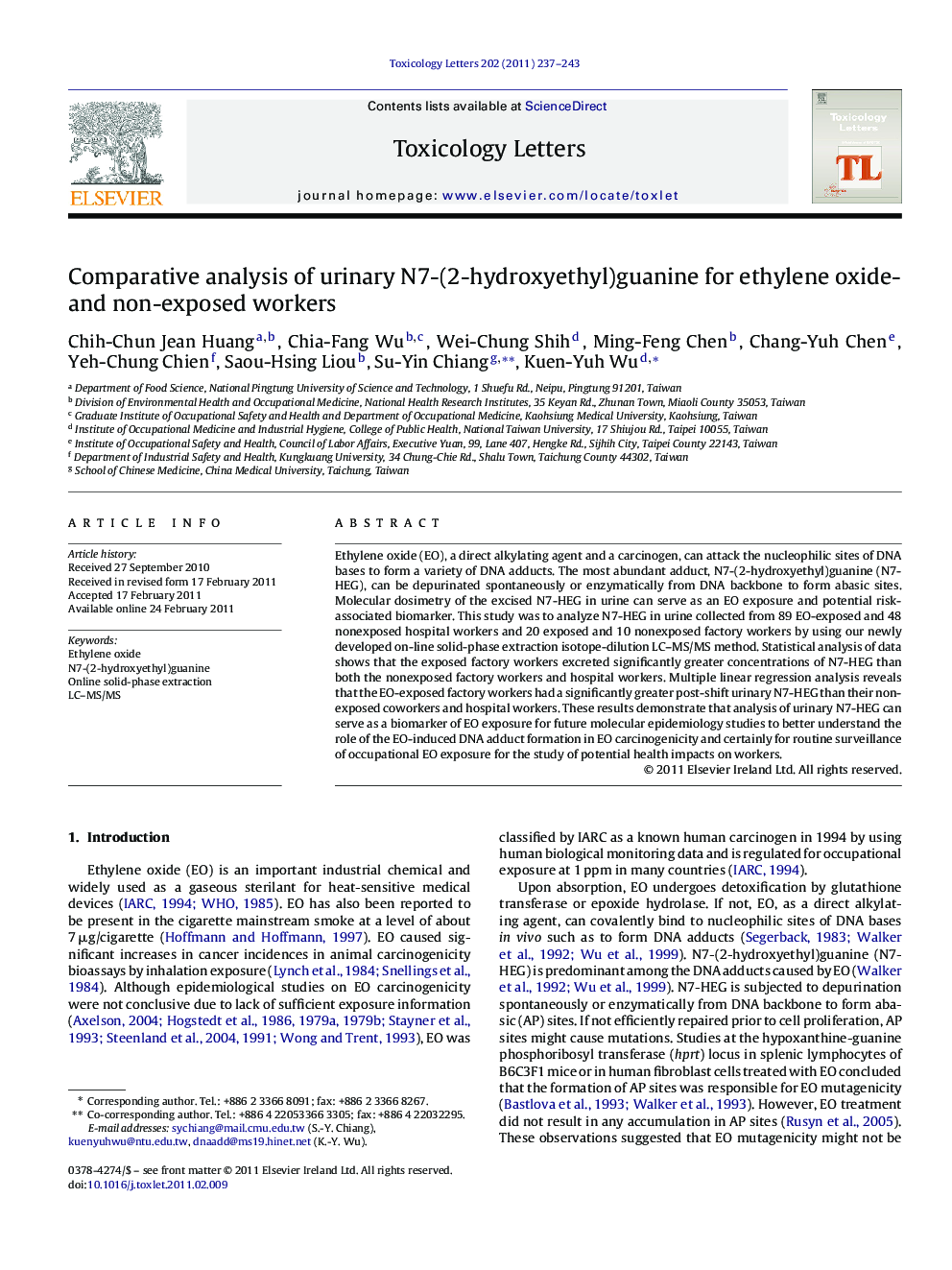| Article ID | Journal | Published Year | Pages | File Type |
|---|---|---|---|---|
| 2600071 | Toxicology Letters | 2011 | 7 Pages |
Ethylene oxide (EO), a direct alkylating agent and a carcinogen, can attack the nucleophilic sites of DNA bases to form a variety of DNA adducts. The most abundant adduct, N7-(2-hydroxyethyl)guanine (N7-HEG), can be depurinated spontaneously or enzymatically from DNA backbone to form abasic sites. Molecular dosimetry of the excised N7-HEG in urine can serve as an EO exposure and potential risk-associated biomarker. This study was to analyze N7-HEG in urine collected from 89 EO-exposed and 48 nonexposed hospital workers and 20 exposed and 10 nonexposed factory workers by using our newly developed on-line solid-phase extraction isotope-dilution LC–MS/MS method. Statistical analysis of data shows that the exposed factory workers excreted significantly greater concentrations of N7-HEG than both the nonexposed factory workers and hospital workers. Multiple linear regression analysis reveals that the EO-exposed factory workers had a significantly greater post-shift urinary N7-HEG than their nonexposed coworkers and hospital workers. These results demonstrate that analysis of urinary N7-HEG can serve as a biomarker of EO exposure for future molecular epidemiology studies to better understand the role of the EO-induced DNA adduct formation in EO carcinogenicity and certainly for routine surveillance of occupational EO exposure for the study of potential health impacts on workers.
